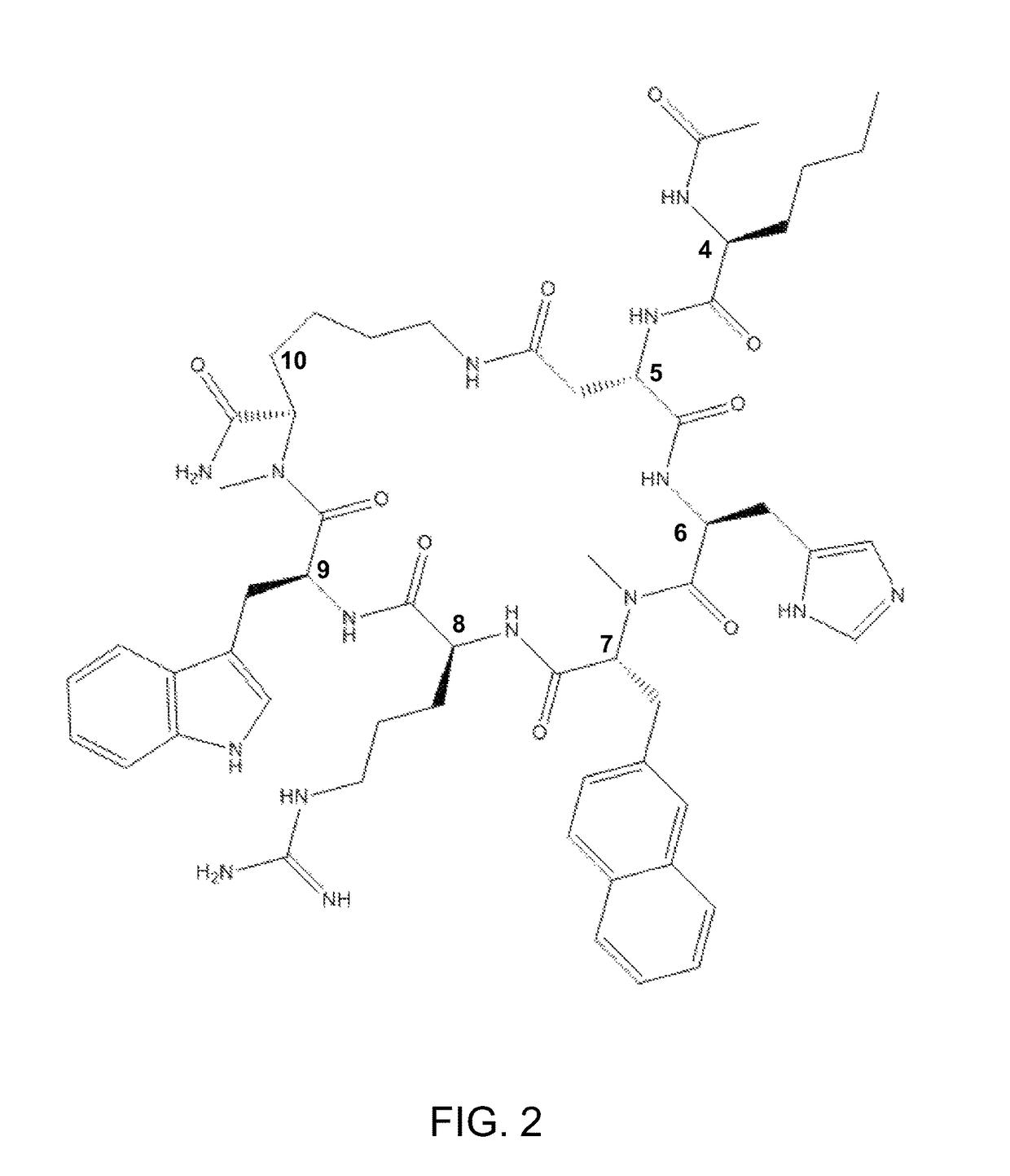Methods for the treatment of depression and anxiety
a depression and anxiety treatment and treatment method technology, applied in the field of depression or anxiety, can solve the problems of patients continuing to suffer from their symptoms, being at risk, and taking weeks to months to achieve the full effect, and achieving the effect of reducing the risk of death, and reducing the effect of the effect of the drug
- Summary
- Abstract
- Description
- Claims
- Application Information
AI Technical Summary
Benefits of technology
Problems solved by technology
Method used
Image
Examples
example 1
Repeated Administration of a Fixed Dose IV
[0055]The following example describes a treatment strategy for depression involving the repeated administration of PEPTIDE 9.
[0056]A 52 year old female has a strong family history of depression and has had disabling depression since her teens. She has been tried on numerous oral medications without benefit. At times she is agitated and has panic attacks, which fluctuates with lethargy and insomnia. She is referred to a neurologist, who rules out any secondary causes for her symptoms. Her brain MRI scan and routine lab testing is within normal limits. Her psychiatrist recommends a trial of PEPTIDE 9 administered intravenously. A fixed IV of a PEPTIDE 9 dose (1 mg / kg infusion over 30 minutes) is repeated administered every two days over a two to three week period in hospital. A follow up visit with her psychiatrist reveals improving depression symptoms with less agitation, improved energy levels and sleep patterns. A second treatment of the fi...
example 2
Transdermal Administration of PEPTIDE 9
[0057]The following example describes treatment strategies for depression involving transdermal administration of PEPTIDE 9.
[0058]Six weeks after a 30 year old female gives birth to her first child, a follow up appointment with her obstetrician reveals that she is suffering from post-partum depression. The patient is experiencing excessive crying, difficulty bonding with her baby, excess sleeping, overwhelming fatigue, intense anger and sadness, and severe anxiety and panic attacks. She further reports that in some instances, she has thoughts of suicide and harm coming to her baby. The female takes the Edinburgh Post Natal Depression Scale (EPDS) test, in which she scores a 25. A score of 10 or greater indicates possible perinatal mood or anxiety disorder. Her obstetrician refers her to a psychiatrist, who officially diagnoses her with postpartum depression. The psychiatrist recommends a trial of PEPTIDE 9 administered using a transdermal patch...
example 3
Oral Administration of PEPTIDE 9
[0059]The following example describes treatment strategies for depression and anxiety involving oral administration of PEPTIDE 9.
[0060]A 50-year-old Caucasian male reports to his psychiatrist that he is feeling depressed and having panic attacks. He reveals that these symptoms began after his divorce. His psychiatrist prescribes an oral medication of a formulation comprising PEPTIDE 9 in a dose of 10 mg per tablet. The patient is to take the tablet twice a day for one month. The patient is highly responsive and experiences a reduction in his symptoms during the initial treatment period. After the initial treatment, the patient is prescribed to take a tablet of 5 mg of PEPTIDE 9 once a day for another month. The patient continues to improve and is functioning normally at three months. No side effects are reported.
PUM
| Property | Measurement | Unit |
|---|---|---|
| body weight | aaaaa | aaaaa |
| anxiety disorder | aaaaa | aaaaa |
| weight | aaaaa | aaaaa |
Abstract
Description
Claims
Application Information
 Login to View More
Login to View More - R&D
- Intellectual Property
- Life Sciences
- Materials
- Tech Scout
- Unparalleled Data Quality
- Higher Quality Content
- 60% Fewer Hallucinations
Browse by: Latest US Patents, China's latest patents, Technical Efficacy Thesaurus, Application Domain, Technology Topic, Popular Technical Reports.
© 2025 PatSnap. All rights reserved.Legal|Privacy policy|Modern Slavery Act Transparency Statement|Sitemap|About US| Contact US: help@patsnap.com


